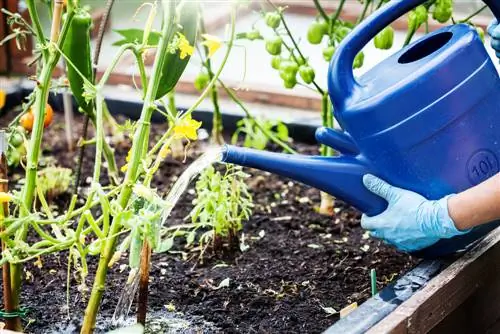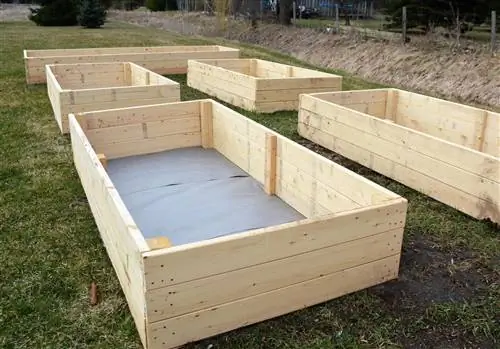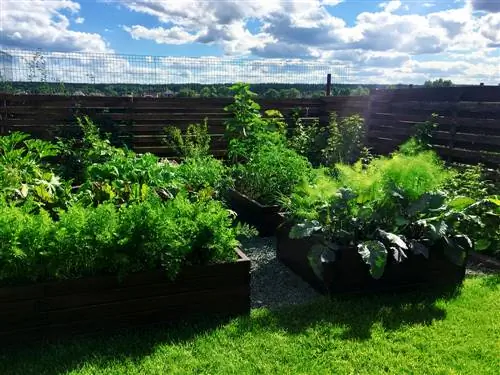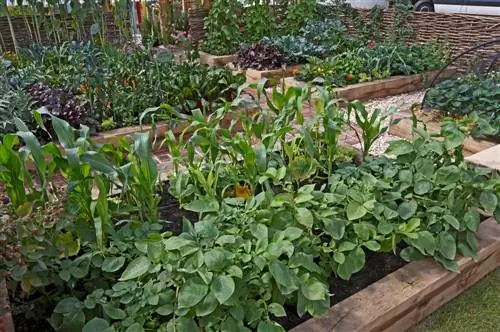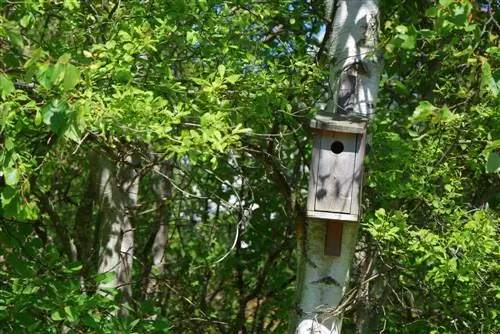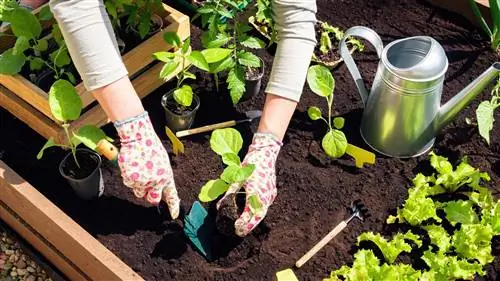- Author admin [email protected].
- Public 2023-12-16 16:46.
- Last modified 2025-01-23 11:21.
Plants need lots of nutrients to grow and thrive he althily. Of course, this especially applies to vegetables that are supposed to produce plenty of delicious leaves, tubers and fruits. If you cannot extract enough nutrients from the soil, the plants will remain small, the leaves will turn yellow and the harvest will be poor. Therefore, balanced fertilization is immensely important for a rich harvest.
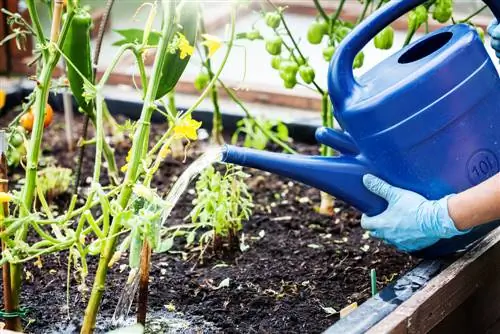
How should you fertilize a raised bed?
To optimally fertilize a raised bed, you should plant heavy feeders in the first year and possibly incorporate organic fertilizers such as horn shavings and patent potash. After that, you can use liquid fertilizer or mulching to meet the plants' nutrient needs.
Fertilize correctly in the compost raised bed
A well-layered compost raised bed is full to the brim with a variety of nutrients, so additional fertilizing can be kept to a minimum. However, this only applies if you plant the vegetables according to their nutritional requirements. In the first year, it is recommended to plant heavy feeders such as tomatoes, peppers, cucumbers, zucchini, pumpkin, cabbage, celery or potatoes, as a lot of nutrients are released at this point. More heavy feeders can also be planted in the second year, but then they often need additional organic fertilization. All you need to do in spring is incorporate a few handfuls of horn shavings (€32.00 on Amazon) (approx.100 grams per square meter) and patent potash (approx. 20 grams per square meter). Since the supply of nutrients decreases over the period of use, you should finally plant medium-feeding plants in the second, or at the latest in the third year, and low-feeding plants in the third to fourth year. Here too, annual fertilization with horn shavings and patent potash is recommended, but in smaller doses.
How to fertilize in raised soil beds
If, on the other hand, you do not layer the raised bed but fill it with fresh soil every year, you must fertilize regularly with a liquid complete fertilizer. Since most potting soils are pre-fertilized, you only start supplying nutrients approximately four to six weeks after planting. Then add liquid fertilizer every one to three weeks, depending on your nutrient needs. If possible, use special plant fertilizers (e.g. tomato or herb fertilizer). The dosage recommendations for commercially available all-round vegetable fertilizers usually refer to heavy eaters, which is why you have to reduce the dose accordingly for medium and light eaters. Medium eaters only receive two thirds, weak eaters one third of the recommended dose.
Mulching instead of fertilizing
Weekly mulching not only ensures that the constant loss of substrate in the raised bed is compensated for - you also provide your plants with additional nutrients and can therefore save on frequent watering and fertilization. For medium and weak feeders, mulching with grass clippings, chopped plant parts or compost even makes fertilizing unnecessary. The more nitrogen the mulching material contains, the better it fertilizes the soil. The smaller the material is cut, the faster it will decompose.
Tip
Home-made plant manure, for example from nettle or Phacelia (bee friend), is also ideal for liquid fertilization in raised beds.

